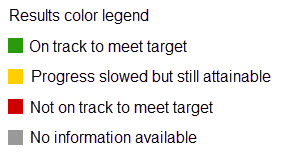Analysis of Performance
The unemployment rate is defined by the Bureau of Labor Statistics (BLS) as the percentage of adults who do not have a job, have actively sought work in the last four weeks, and are currently able to work. The unemployment rate is a percentage of the labor force, the sum of the unemployed plus the employed. https://www.brookings.edu/blog...
"The unemployment rate is an indicator of access to economic opportunity. High unemployment represents a loss of jobs and a loss of income, which impacts economic self-sufficiency and influences consumer expenditures." NoCo Recovers Recovery Tracker
- Fort Collins unemployment rates increased across Northern Colorado and the state for Q4 2024.
- Full data for Q1 2025 is not released but trends show that the unemployment rate is continuing to rise, reaching 5.1% for Fort Collins in February 2025. This trend is showing a change in business and staffing patterns has business are tightening budgets during economic uncertainty and also reflects the mass layoffs in the government and tech sectors that are still occurring. Job postings are also decreasing and there is an increase in what is considered "ghost jobs" for job postings that are not hiring. While rates are still near the level considered "healthy," if rates continue to rise, indicating more individuals with no job, it will impact wages, new jobs, spending, and more into the future leading to more economic fear and uncertainty.
Metric Definition
Local unemployment rate is the percentage of the total labor force that is unemployed but actively seeking employment and willing to work. This includes persons actively looking for work in the prior 4 weeks by contacting an employer directly, having a job interview, sending out resumes or filling out applications.
Why Is This Important?
The unemployment rate is a key top-line economic metric providing an overall understanding of economic activity in a community. This metric is commonly used as the primary indicator to measure the economic success and resiliency of a community.
City Organization Impact on Performance
Low – Although we have influence on local hiring activity, the City of Fort Collins does not control the local population change.
Benchmark Information
This metric contains state and national benchmark data to place Fort Collins' performance in context. While the City's target is 5% (which is generally considered full employment), these benchmarks allow identification of larger trends to analyze how statewide or national effects are impacting the City's performance.
